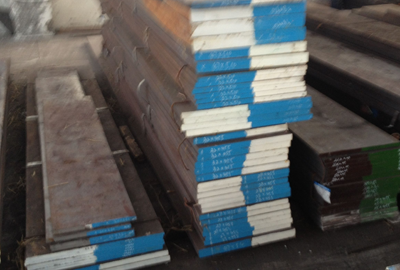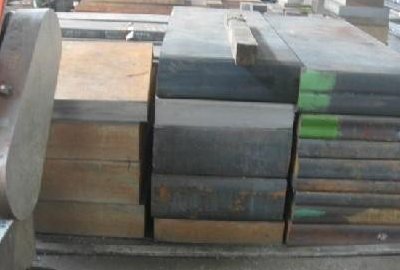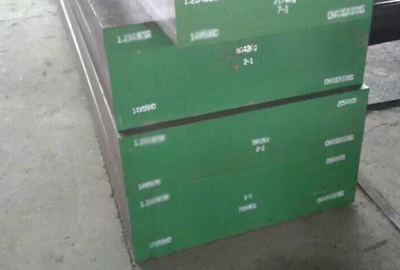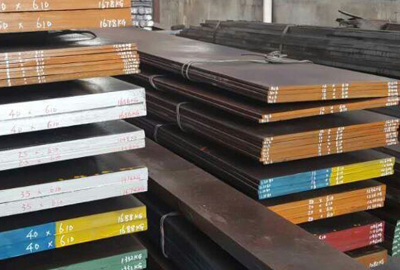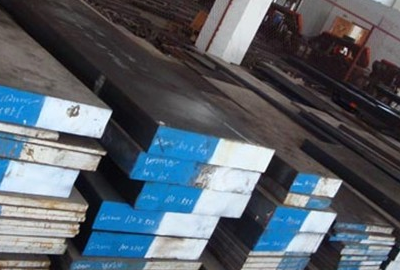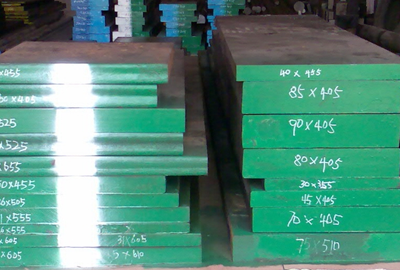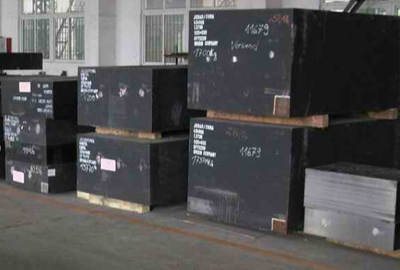Mat.No. 1.2343 Mod., DIN X38CrMoV51 Mod., AISI H11 Mod
Short Description:
Designation by Standards Mat. No. DIN EN AISI 1.2343 Mod. X38CrMoV51 Mod. X38CrMoV51 Mod. H11 Mod. Chemical Composition (in weight %) C Si Mn Cr Mo Ni V W Others 0.36 0.20 0.30 5.00 1.35 - 0.45 - - Description RAVNEX is supreme steel grade in the group of hot work tool steels. Special production methods ensure optimal parameters in all phases of steelmaking, providing this steel grade with supreme characteristics resulting in a higher tool durability. This steel incorporates t...
Product Detail
FAQ
Product Tags
Designation by Standards
| Mat. No. | DIN | EN | AISI |
| 1.2343 Mod. | X38CrMoV51 Mod. | X38CrMoV51 Mod. | H11 Mod. |
Chemical Composition (in weight %)
| C | Si | Mn | Cr | Mo | Ni | V | W | Others |
| 0.36 | 0.20 | 0.30 | 5.00 | 1.35 | - | 0.45 | - | - |
Description
RAVNEX is supreme steel grade in the group of hot work tool steels. Special production methods ensure optimal parameters in all phases of steelmaking, providing this steel grade with supreme characteristics resulting in a higher tool durability. This steel incorporates the knowledge and experience of many generations of tool steel specialists.
Applications
Above all, the RAVNEX grade is designed for die casting of light metals and alloys (aluminium and aluminium alloys), for die forging of steel and non-ferous metals (e.g. cupper) and their alloys, for extrusion of tubes, barrels and sections made of light metals and alloys, for casting and processing of various plastics, and for glass processing. Characterics: Excellent homogeneity, high cleanliness, high level of isotrophy, good workability, high impact toughness, good polishability. Advantages: Lower cost due to: Higher tool life, lower tool wear, less tool repair, less tool changes and consistent heat treatment results.
Physical properties (avarage values) at ambient temperature
Modulus of elasticity [103 x N/mm2]: Approx. 215
Density [g/cm3]: 7.85, 7.69 (500oC), 7.65 (600oC)
Electric resistivity [Ohm mm2/m]: Apprx. 0.50
Specific heat capacity[J/g.K]: Approx. 0.46
Transformation points: Ac1=805oC, Ac3=880oC
Thermal Conductivity [W/m.K] vs. Temperature
| 100oC | 200oC | 300oC | 400oC | 500oC | 600oC | 700oC |
| 28.4 | 29.7 | 30.2 | 30.1 | 30.0 | 29.7 | 30.0 |
Coefficient of Linear Thermal Expansion 10-6 oC-1
| 20-100oC | 20-200oC | 20-300oC | 20-400oC | 20-500oC | 20-600oC | 20-700oC | 20-800oC |
| 11.9 | 12.4 | 12.8 | 13.2 | 13.6 | 14.2 | 14.4 | 14.4 |
Continuous Cooling Transformation (CCT) Diagram

Click the image to enlarge the diagram.
Soft Annealing
Heat to 800-850oC/ min. 4 hours at temperature then cool slowly in furnace. This will produce a maximum Brinell hardness of 209 HB.
Stress Relieving
Stress relieving to remove machining stresses should be carried out by heating to approx. 600-650oC, holding for 3 hours at temperature, followed by slow cooling in furnace. This operation is performed to reduce distortion during heat treatment and to reduce stress after machining of tools prior to final heat treatemnt of tools.
Hardening
Harden from a temperature of 980-1000oC/ 30 minutes at temperature, followed by oil, thermal bath, air, vacuum and protective atmosphere quenching.
Tempering
1st tempering: 20-30oC over secondary peak in the tempering diagram.
2nd tempering: Tempering to a working hardness of tool.
Recommendation: 3rd tempering from 20-50oC down to bellow the temperature of 2nd tempering.
Tempering: Slow heating up to tempering temperature is recommended, tempering tims: min. 2 hours and/or 1 hour for 20-25 mm thickness fo tool.
Tempering Temperature (oC) vs. Hardness (HRC)
| 100oC | 200oC | 300oC | 400oC | 500oC | 550oC | 600oC | 650oC |
| 54 | 53 | 52 | 51.5 | 52 | 52 | 47 | 38 |
Tempering Diagram

Click the image to enlarge the diagram.
General Diagram of Heat Treatment

Microstructure
When annealed, the RAVNEX microstructure consists of equally distributed secondary carbides in the form of globules in a ferritic base along the whole section. To achieve such microstructure in an annealed condition, special advanced metallurgical methods are carried out in all phases of steel production. When annealed, hardness ranges between 170 and 209 HB. RAVNEX provides a uniform hardness and toughness along the entire tool cross-section. This is achieved with a uniform distribution of secondary carbides in steel, even after hardening and tempering.

Microstructure of annealed RAVNEX steel,
SEP 1614:1916, Mag. 500X.
Purity of steel RAVNEX
In comparison with a standard steel grade, RAVNEX provides a high level of cleanliness. According to standard DIN 50602, the required K1 cleanliness is maximum of 15.

Cleanliness of steel RAVNEX according to DIN 5062.
Mechanical Properties
Impact Toughness (KV) vs. Hardness

A Comparison of Impact Toughness (Standard Steel Grade) vs. RAVNEX

Note: Accoridng to SEP 1314: 1996, hardened and tempered: 43-46 HRC,
forging core, transverse section.
Tempering Diagram and Impact Toughness

Note: Impact test pieces (KV and KU) are cut out of the core in transverse section
of the forging. Heat treatment: Temperature of hardening: 1000oC/oil and double
tempering 2 hours each in a temperature interval of 100oC to 650oC. EN 10045:-1,
temperature of testing: 20oC.
Diagram of Impact Toughness (KU) vs. Temperature

Note: EN 10045:-1, temperature of testing: 20oC.
Diagram of Impact Toughness (KV) vs. Temperatures

Note: Impact test pieces (KV and KU) are cut out of the core in transverse
section of the forging. Heat treatment: Temperature of hardening: 1000oC/oil
and double tempering to the hardness of 45 +/- HRC.
Forging
Hot forming temperature: Please ask.
Machinability
Please see the section bellow.
Nitriding
RAVNEX is suitable for nitriding and nitrocarburizing. Surface hardness over 1000 HV0.3can be achieved by gas, plasma, or salt processes. Nitriding must be performed 20-50oC below a previous tempering temperature, depending on the process time and temperature, to avoid loss of hardness, strength, and dimensional changes of the workpiece. Essential benefits of a hard nitrided or nitroCarburizingd surface lie in an improved.
Welding
RAVNEX can be welded successfully by the MMA or GTA welding process, provided that proper precautions are taken before, during, and after welding. Laser weld repair of smaller cracks and edges is recommended to minimize negative effects of high residual stresses in weldments and heat affected zones. GTA welding is generally performed using AISI H11 consumables. Proper weld preparation is crucial; cracks are ground out to sound steel, correct joint slope and bottom radius shall be considered. Welding can be performed in soft annealed or hardened and tempered condition. In both cases, a preheat to 350oC is recommended. This temperature is to be maintained throughout welding. After welding, soft annealed or hardened and tempered parts are slowly cooled down to between 70 and 100oC, then soft annealed or tempered 20oC below the last tempering temperature.
Dimensional Changes During Hardening
Temperature gradients in a workpiece during quenching often cause high stresses which cause distortion. Stress relief annealing between rough and semi-finish machining prior to hardening is recommended to limit distortion during quenching. Minimum machining allowance to account for Ravnex distortion during a correctly performed rapid quench is 0.4% of the characteristic workpiece dimension, provided that stress relief annealing has been performed.
Electrical Discharge Machnining
Surfaces which are subjected to the Electrical Discharge Machnining (EDM) process must be ground or blanched ground to remove the brittle, resolidified surface layer. In addition, the material subjected to EDM must be tempered about 20oC bellow the previous tempering temperature to give a temper to the rehardened and untempered layer underneath. Both layers are very brittle and such detrimental to die performance.
Aluminium Die Casting Tool Life
Maximum results are achieved when steel producers, tool producers and product producers combine their knowledge and experience. Tehnical support from production combined with sales expertise is required to service these products. We offer a vast knowledge in the production of hot work tool steels.

Comparison of die casting cycle numbers between RAVNEX and competitive
steel grades.
Forms manufactured: Please see the Dimensional Sales Program.
Disclaimer
The information and data presented herein are typical or average values and are not a guarantee of maximum or minimum values. Applications specifically suggested for material described herein are made solely for the purpose of illustration to enable the reader to make his own evaluation and are not intended as warranties, either express or implied, of fitness for these or other puposes. There is no representation that the recipient of this literature will receive updated editions as the become available.
FAQ Content
![[0{7)7UAZ(]4W{5TSMC65Q7](https://www.htsteelmill.com/uploads/077UAZ4W5TSMC65Q7.png)
